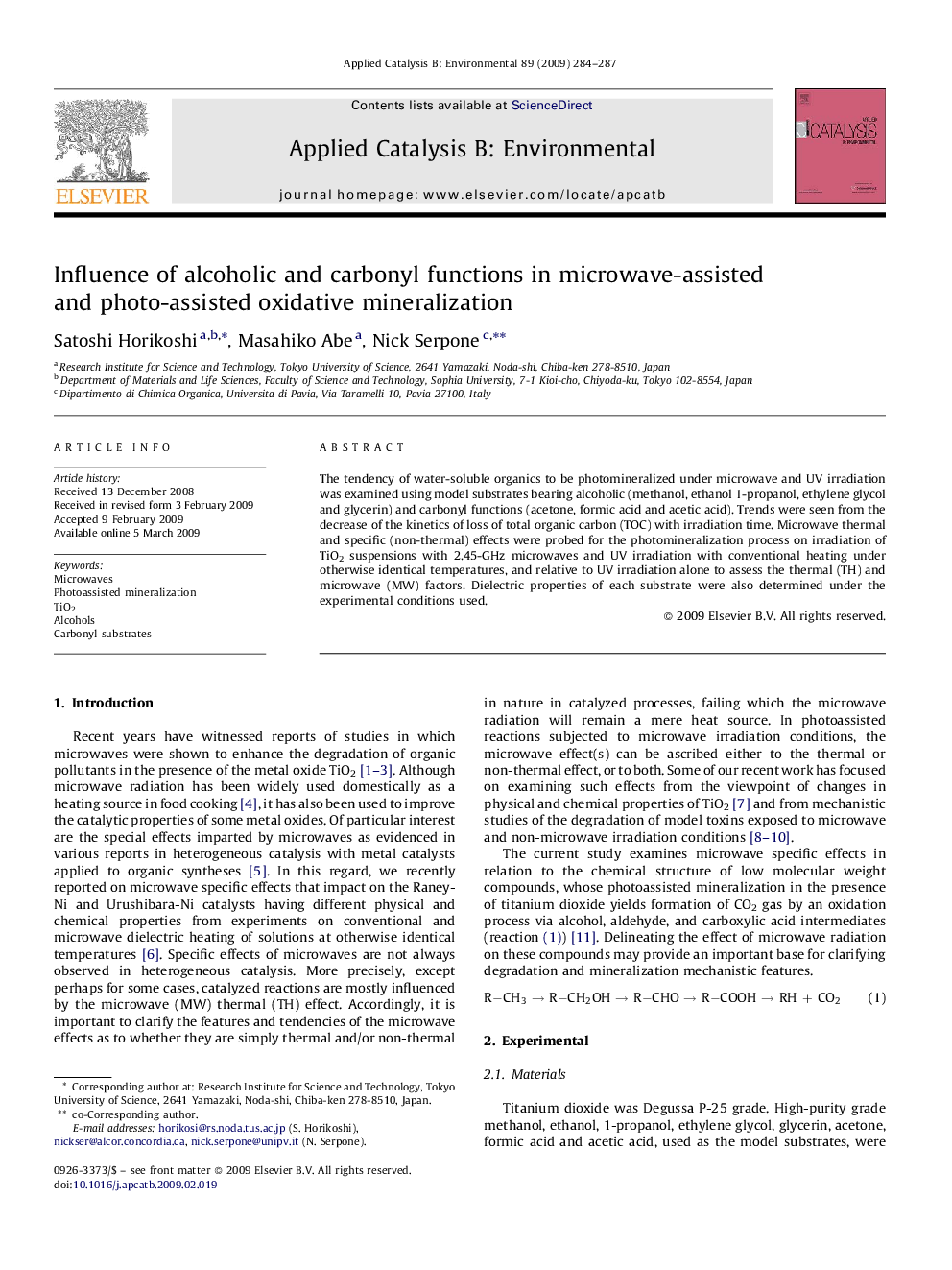| Article ID | Journal | Published Year | Pages | File Type |
|---|---|---|---|---|
| 47861 | Applied Catalysis B: Environmental | 2009 | 4 Pages |
The tendency of water-soluble organics to be photomineralized under microwave and UV irradiation was examined using model substrates bearing alcoholic (methanol, ethanol 1-propanol, ethylene glycol and glycerin) and carbonyl functions (acetone, formic acid and acetic acid). Trends were seen from the decrease of the kinetics of loss of total organic carbon (TOC) with irradiation time. Microwave thermal and specific (non-thermal) effects were probed for the photomineralization process on irradiation of TiO2 suspensions with 2.45-GHz microwaves and UV irradiation with conventional heating under otherwise identical temperatures, and relative to UV irradiation alone to assess the thermal (TH) and microwave (MW) factors. Dielectric properties of each substrate were also determined under the experimental conditions used.
Graphical abstractThe microwave specific effect was examined for the TiO2-photoassisted mineralization of substrates with alcoholic and carbonyl functions. Process enhancement was expected from the predominant absorption of microwaves by the substrates in the aqueous medium from determination of dielectric loss factors.Figure optionsDownload full-size imageDownload as PowerPoint slide
